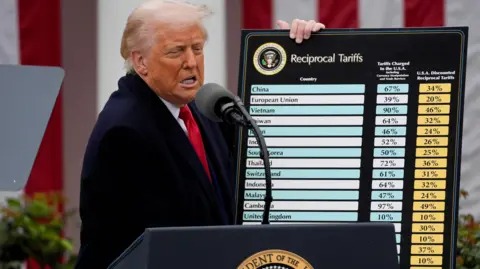The Supreme Court of the United States is currently hearing arguments about whether Donald Trump’s sweeping tariff measures are lawful under the International Emergency Economic Powers Act (IEEPA) Tariff News. Reuters+2AP News+2
-
Justices questioned whether the President can impose broad import duties (tariffs) without a specific authorization from Congress — traditionally, taxation is a congressional power. Reuters+1
-
The outcome could have big implications for U.S. trade policy and executive powers. Reuters
-
The administration argued these tariffs aren’t about raising revenue but are regulatory tools aimed at reducing dependence on foreign goods. The Washington Post
2. China lifts some tariffs on U.S. goods
Beijing’s government confirmed it will suspend a 24 % retaliatory tariff on U.S. goods for one year, but will retain a 10 % levy. Profit by Pakistan Today+1
-
Some tariffs up to 15 % on U.S. agricultural goods will also be lifted from 10 November. Profit by Pakistan Today
-
This signals a slight easing of trade tensions between the U.S. and China — but still with major caveats (quotas, retained tariffs).
3. Global growth and inflation pressures
The Organisation for Economic Co‑operation and Development (OECD) warns that increased tariffs will slow global economic output and boost inflation. mint
-
For example: a 10 pp increase in tariffs (and subsequent retaliation) could cut global growth by ~0.3 %. mint
-
For U.S. households, real incomes could be ~1.25 % lower three years after such a tariff shock. mint
4. Impact on Pakistan
For Pakistan, the news is also significant:
-
The government agreed with the International Monetary Fund (IMF) to cut its average applied tariffs by about 43% over five years (to ~6 %) in a move toward trade liberalisation. Business Standard+1
-
Meanwhile, Pakistani exporters face risk: a report estimated the U.S.’s unilateral tariff increases could cause a 20–25% drop in Pakistan’s U.S. exports (about US $1.1–1.4 bn annually) if duties rise substantially. Profit by Pakistan Today
Why this matters
Trade & competitiveness
Tariffs increase the cost of imported goods (either raw materials, intermediate goods or finished products) which then increases cost for manufacturers and consumers. As the OECD found: higher tariffs = higher inflation + slower growth. mint
For exporters (especially from smaller economies like Pakistan), rising tariffs in major markets (like the U.S.) weaken their competitiveness. Pakistan’s textile sector, for instance, is flagged as vulnerable. Profit by Pakistan Today
Supply chains & relocation
Companies are rethinking where they source and manufacture. One Australian company, Breville Group, is shifting production out of China to reduce exposure to the U.S.–China trade war. The Australian
For Pakistan, this opens both risk and opportunity: risk if tariffs hurt export markets; opportunity if companies look for new sourcing/manufacturing hubs outside the usual China‑centric chain.
Legal & policy precedent
The U.S. Supreme Court case is important not just for U.S. policy but global trade norms: if executive unilateral tariffs (under emergency powers) are upheld, it may encourage more countries to use similar levers — raising the risk of trade wars.
If they are struck down, it may limit how far and how fast tariff‑escalations can go without legislative backing.
What should Pakistan (and similar economies) keep an eye on
-
Export market shifts: If the U.S. imposes or increases tariffs on products from Pakistan (or countries Pakistan competes with), this may disrupt current export flows.
-
Tariff reform & inward openness: Pakistan’s own plan to reduce tariffs is a double‑edged sword – it opens up competition domestically but promises access/competitiveness abroad. Monitoring implementation is key.
-
Supply chain diversification: Firms may look outside traditional hubs (China) — Pakistan could position itself as a manufacturing/assembly alternative if it builds infrastructure, reliability and favourable trade/ tariff regime.
-
Legal/trade frameworks: Changes in U.S., China, EU trade rules could cascade and affect global trade rules (e.g., via the World Trade Organization). Pakistan should monitor how these rules evolve and align its strategy accordingly.
-
Cost of imports → domestic manufacturing: Tariffs make imported inputs costlier; domestic industries that rely on imported inputs may struggle or need support. At the same time, domestic manufacturing protected by tariffs may lose competitiveness globally.
Looking ahead: Key trends to watch
-
The Supreme Court’s decision on the IEEPA and U.S. tariff legality — outcome expected in coming months.
-
Whether China (and possibly other countries) go further in suspending or removing tariffs, as a step toward easing trade tensions.
-
How global companies continue to restructure supply chains: will we see “decoupling” from China, or shifts to Southeast Asia/Pakistan/Middle East?
-
Pakistan’s tariff reduction timetable: how it executes it, sectors affected, domestic industry adaptation.
-
The broader geopolitical dimension: tariffs increasingly being used as tools of diplomacy/national security, not just trade. That means more unpredictability.
